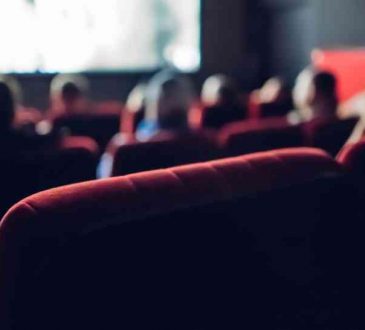OK Boomer: Reaching across the Generational Divide

“OK boomer” quipped 25-year-old Chlöe Swarbrick, a New Zealand MP who threw the phrase back at an older heckler whilst making a speech on climate change in the country’s parliament. Cue a media storm that unearthed a quiet rumbling of discontent between the generations – a spat that has dredged up a whole load of assumptions and some prejudices about what it means to be of a particular age in society today.
We’re all familiar with the stereotypes. Millennials, the young people, are flaky, lazy and overly entitled. The baby boomers, the older ones, had it easy, are mega-rich and won’t give up their properties. As for Generation Z, the ones born with a smartphone in their hands, well, they see more of their screens than their families. Right? Nowadays it seems we’re quick to latch on to a defining label for every generation, a stereotype that we reinforce. But what do these different labels actually mean and how do they affect how we see, treat and work with those across the “divide”?
Whilst there are undeniable differences between the style and life experiences of baby boomers and millennials, the passage from one generation to the next is a gradual one – but it’s a change that’s already creeping up on us. According to global staffing firm Manpower, millennials will make up 35% of the global workforce this year, with Gen Z (they’re even younger) making up 24%. That’s more than half the entire workforce.
Clearly this doesn’t mean that anyone of more advanced years should simply admit defeat, pack up or gather dust in the corner – boomers have a wealth of experience, knowledge and fire in them that’s invaluable. We’re in a moment of transition, where the growing pains of one generation are colliding with the status quo of another. We need to uncover ways of making a success of this transition – creating moments of positive collision across the ages where intergenerational differences are seen as an asset.
Are we all a bit Ageist?
Let’s be honest, when you describe an entire generation as “lazy” and another as “past it”, that creates a wall of judgement, prejudice, and mental imagery that’s pretty darn hard to overcome. Many of us are certainly innocent of such clichés, but for some of our colleagues these labels can form their world views, however inadvertently.
What does workplace ageism look like? It’s the 28-year-old PA being told they’re “too young” or a job candidate in their 50s overhearing their potential employer is really looking for candidates “with buckets of energy and no bad habits”. Ageism can cut both ways and create real barriers to opportunities for individuals who may have the potential and capability to perform, regardless of how many candles were on their last birthday cake.
US interest group AARP found that 64% of workers have witnessed or personally experienced age-related bias at work. Whilst we can point to countless examples of fantastic employees who challenge common stereotypes, old habits are still dying hard. Ageism and stale attitudes towards any generation can crop up in any situation, however benign – for example:
- Being overlooked for challenging assignments – junior individuals may be seen as too inexperienced whilst older colleagues may be deemed not to have the cognitive speed to keep up with intricate projects
- Being left out of certain client meetings or company activities
- A spoken or unspoken assumption that you are or will be uncomfortable (or comfortable) with new technologies and digital solutions within the workplace
- Hurtful comments about age – these are the platitudes we all hear, the part-timer and entitled millennials or the slow or tired boomer. These are pointed comments that are dressed up as “banter” but can have a bearing on how an individual is seen and treated
Our brains work by relying on long-established stereotypes for more efficient processing and decision making about the people around us. But we need to be better able to recognize, challenge, and overturn some of these more unhelpful thought patterns – particularly the trigger points that spark these unfair assumptions and generational clashes.
Where the Generations Clash
The economy, governmental policy, workplace culture, technological advancement, and even wars and climate change have all been highlighted as contributing towards the generational divide. Together, they set different contexts for certain behaviors and expectations to develop, dictating a world view amongst each generation that can form some of our biases.
These opposing expectations tend to play out in daily workplace scenarios, where competing preferences collide. Common examples include:
- The rate, depth, and relevance of performance feedback
- The format, length, and necessity of meetings
- The ways in which one-to-ones and catch-ups are done – i.e. face to face or virtually
- Differing ideas as to what dress code is appropriate
- Email etiquette and even whether using email is always appropriate
There’s a common thread across these examples, as potential conflict stems from differing approaches to communication and ways of working. It can be said that millennials prefer WhatsApp over jumping on the phone and are more relaxed about work attire. They prefer more flexible working and are far more fluid about when they work. That said, are we missing something here? Are the sources of conflict more cosmetic than fundamental differences? Is it a case of style over substance?
Look Past Style, Understand Substance
The short answer is that different generations, such as the millennials and the baby boomers, might have more in common than we think. The differences we see are commonly a reflection of varying preferences based on experience rather than anything fundamental. A study by Dr David Costanza, an associated professor in the Department of Organizational Sciences at George Washington University, concluded that not only are many of the millennial stereotypes baseless, but that the two generations share an inner rudder. Essentially, they share similar workplace values, motivations and ethics – they all value transparency, collaboration and innovation, and accessible working tools to make life easier. The differences are in how to make these a reality.
The Same but Different
Put simply, generational differences should be seen as a learning opportunity – a chance to make improvements, and constructively make the most of difference. Yes, we’re in the middle of a generational transition, one where the direction of travel is pointing firmly at millennials. But it’s an opportunity for them and the boomers to meet in the middle and anticipate needs rather than shy away from it. This has the potential to create win-win situations for both sides of the divide, for example:
- Flexible working arrangements – flexible working is a much-discussed millennial value, but something that has been warped into a “sense of entitlement”. That said, working in places and at times that fit around style, personal commitments, and productivity patterns is something that can be of benefit to everyone. This is an opportunity for everyone to work in adaptable ways that are mindful of changing priorities and needs
- Reverse mentoring – taking time to learn from each other and to recognise the potential that everyone has is vital. By swapping perspectives and expertise, individuals are more likely to better appreciate what the other can offer. Boomers can benefit from the millennials’ innovative approach to working culture and their familiarity with digital solutions. Millennials can learn from boomers’ professional knowledge and history in the workplace. Colliding these experiences is more likely to unlock diversity of thought which can lead to innovation, better customer service, product development, and risk management
Essentially, the workplace will continue to evolve, and the rate of change we are seeing is only going to become more constant. Our ways of working will surely change but what seems to be stable are our collective values and need for positive working relationships. Bridging the generation divide is key to nurturing, maintaining, and keeping those positive relationships healthy and mature. Respect, trust, authenticity, and continual collisions are key to taking on future challenges – with millennials and boomers hand in hand.
Have you read?
# Richest Women In The World For 2020
# Africa’s Billionaires: Richest People In Africa, 2020
# Most economically influential cities in the world, 2020
# The World’s Best Cities For Luxury Shopping, 2020
# World’s Best Countries To Invest In Or Do Business For 2020
# World’s Best Cities For Millennials In 2020
Add CEOWORLD magazine to your Google News feed.
Follow CEOWORLD magazine headlines on: Google News, LinkedIn, Twitter, and Facebook.
This report/news/ranking/statistics has been prepared only for general guidance on matters of interest and does not constitute professional advice. You should not act upon the information contained in this publication without obtaining specific professional advice. No representation or warranty (express or implied) is given as to the accuracy or completeness of the information contained in this publication, and, to the extent permitted by law, CEOWORLD magazine does not accept or assume any liability, responsibility or duty of care for any consequences of you or anyone else acting, or refraining to act, in reliance on the information contained in this publication or for any decision based on it.
Copyright 2024 The CEOWORLD magazine. All rights reserved. This material (and any extract from it) must not be copied, redistributed or placed on any website, without CEOWORLD magazine' prior written consent. For media queries, please contact: info@ceoworld.biz
SUBSCRIBE NEWSLETTER








